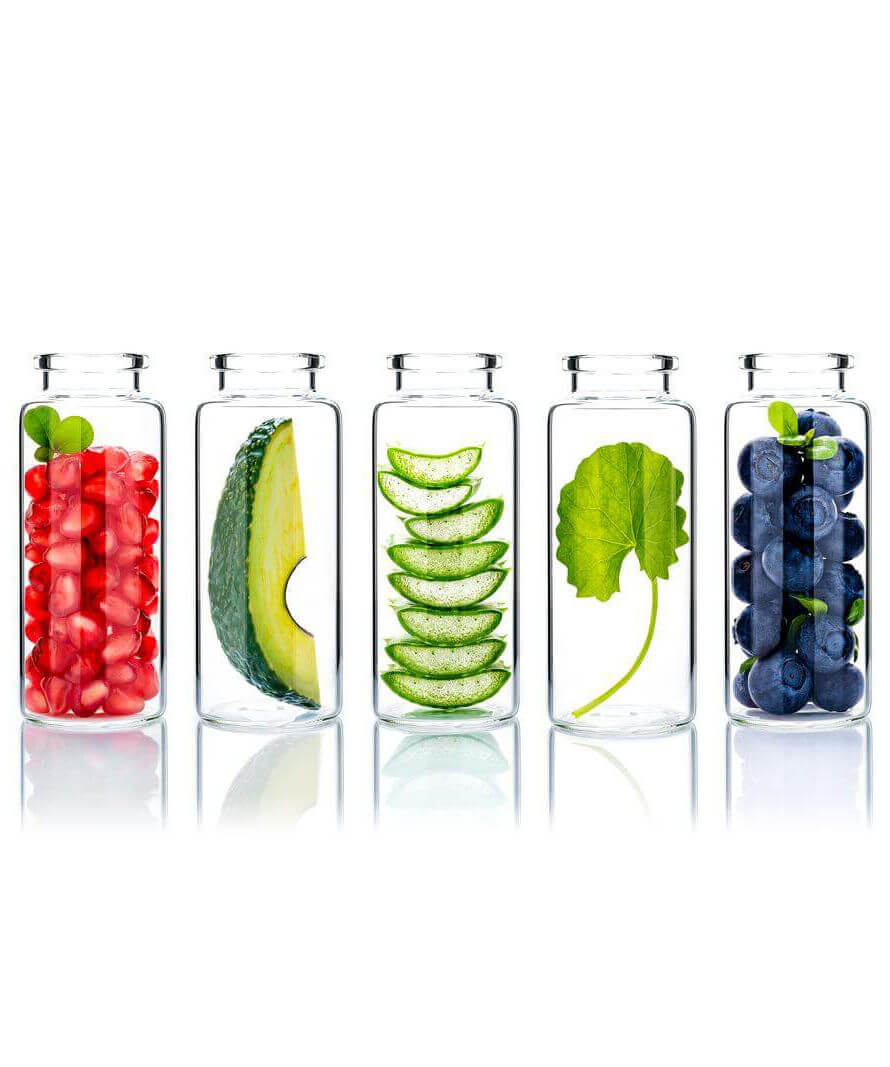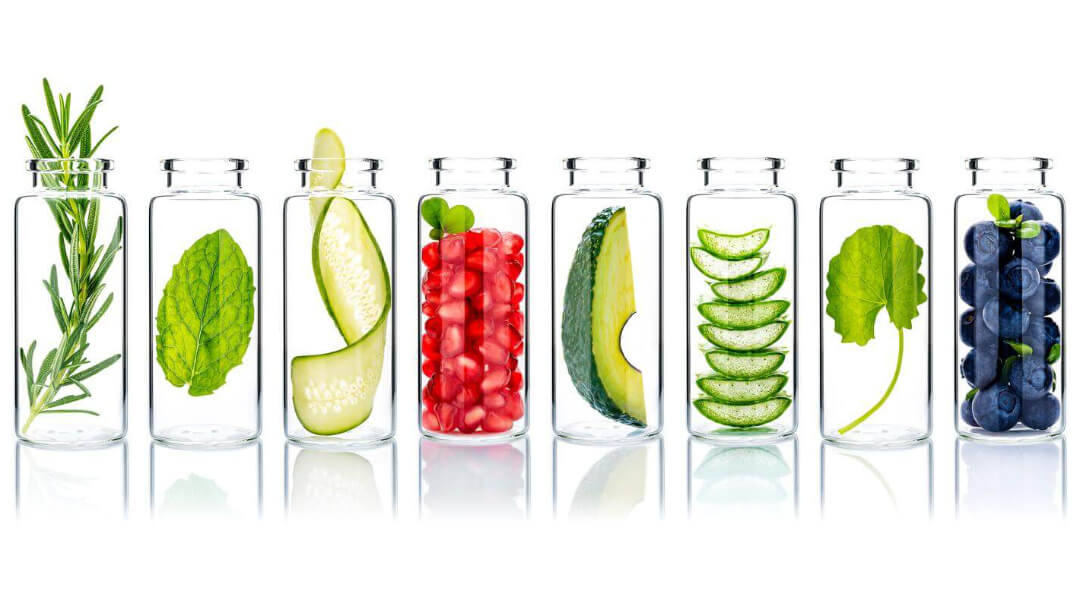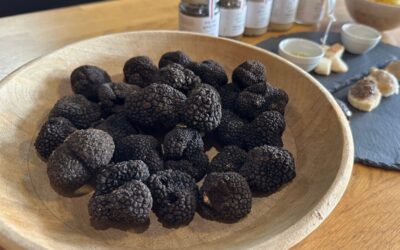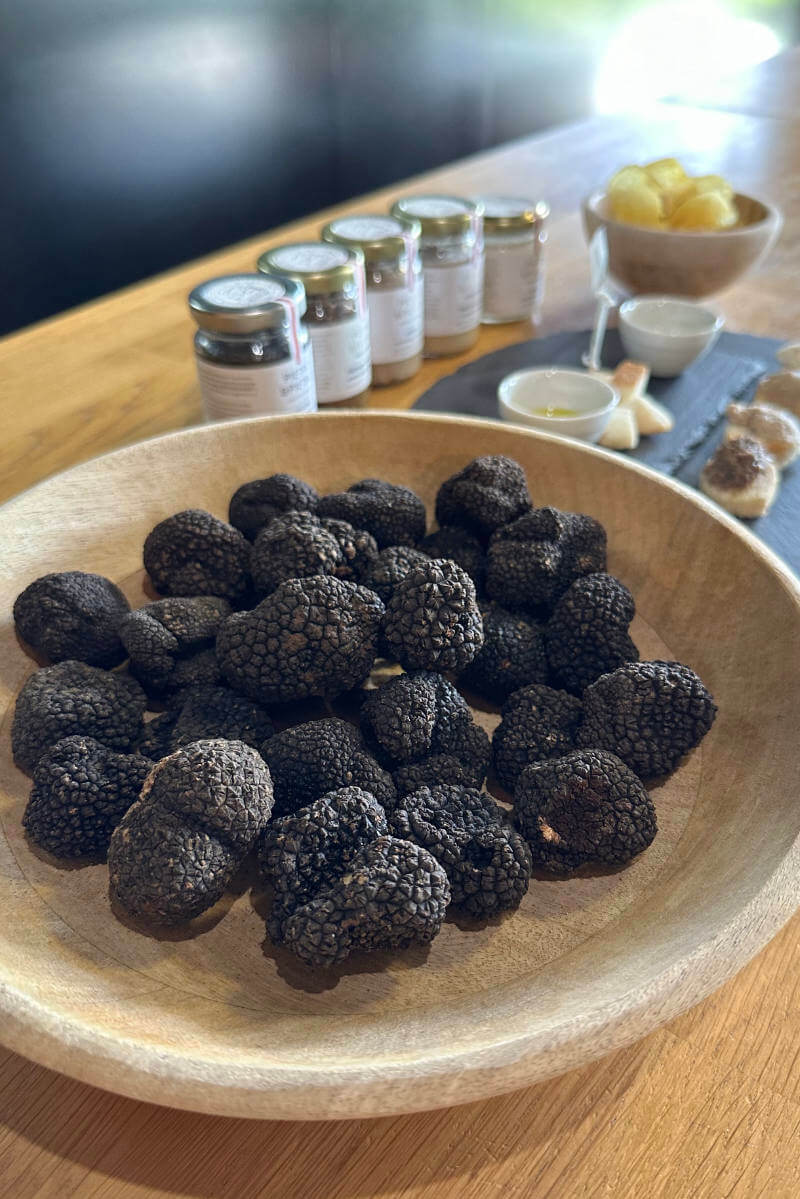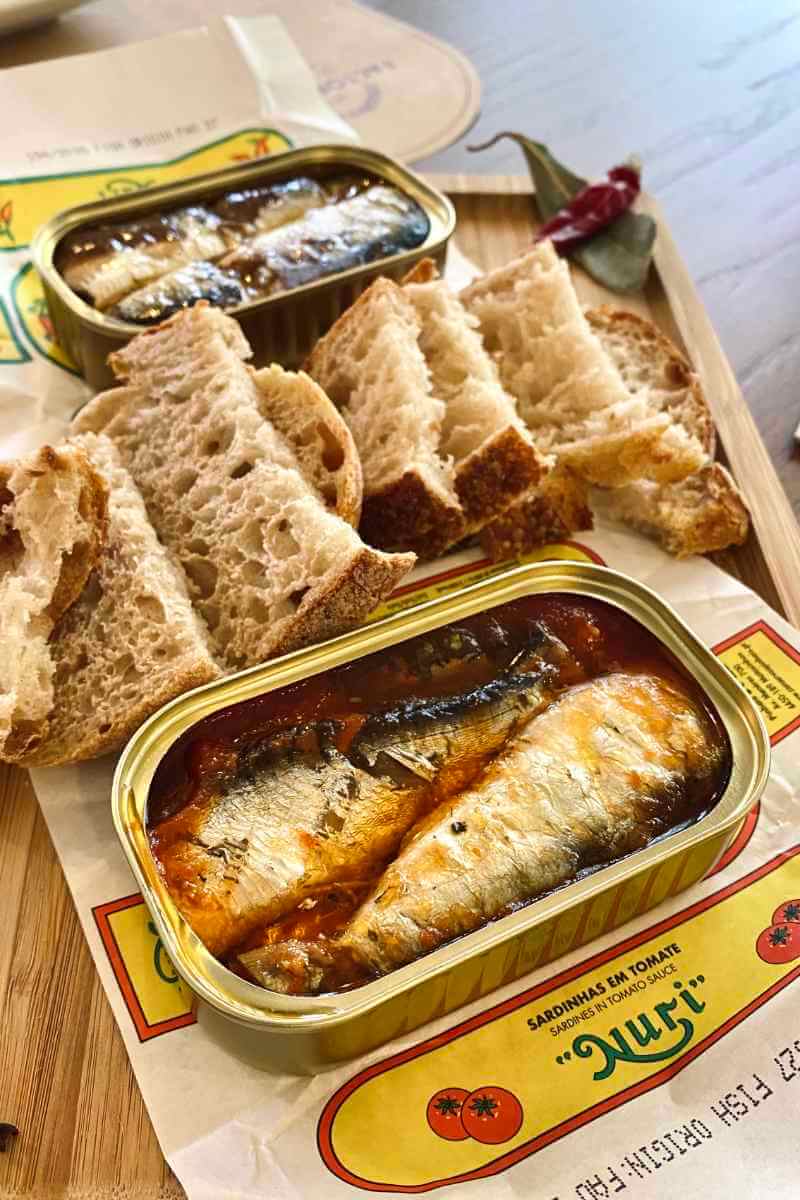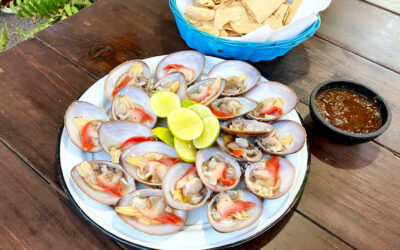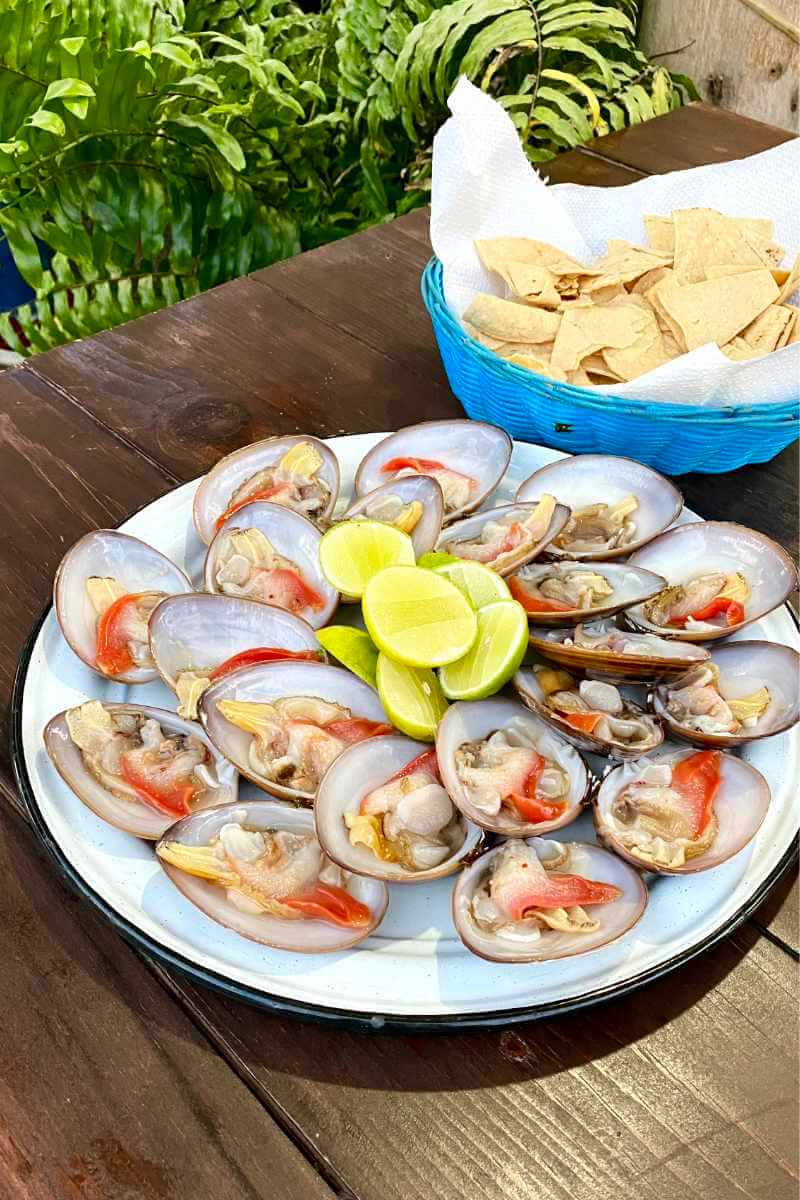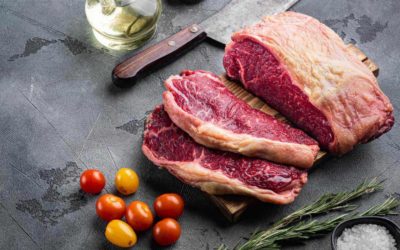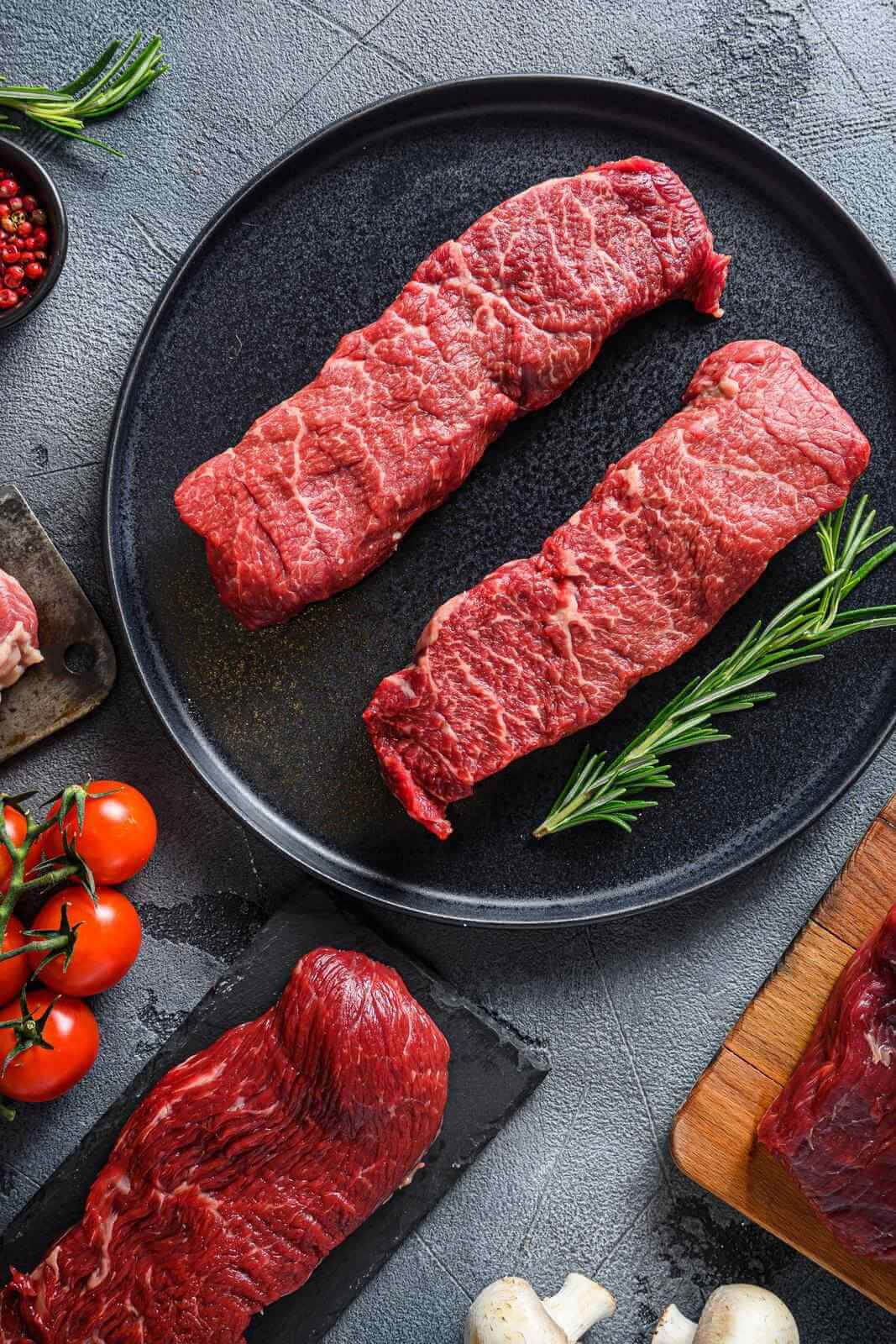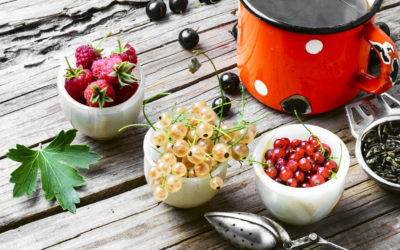We are no strangers to a long list of ingredients on the label of a food or cosmetic product. The ingredient list is crucial information for consumers to know whether the product is what it claims to be, besides finding out anything you may be allergic to. Yet we often overlook the list or think the list sounds Greek, and blindly trust the product. If you care about whether you get what you pay for or are in pursuit of pure and good products, it’s time to open your eyes and learn easy steps to decode the ingredient list.
Understand the basic rule of ingredient list
Labels of food and cosmetics are regulated in most countries. The most common and bare minimum rule for ingredients is to list the ingredients in descending order of predominance, except for ingredients below 1%.
FDA’s Cosmetics Labeling Guide requires:
“The ingredients must be listed in descending order of predominance. However, there are a few exceptions to this requirement. Ingredients present at a concentration not exceeding 1% may be listed in any order after the listing of the ingredients present at more than 1% in descending order of predominance.”
FDA’s Overview of Food Ingredients, Additives & Colors requires:
“On a product label, the ingredients are listed in order of predominance, with the ingredients used in the greatest amount first, followed in descending order by those in smaller amounts.”
Assuming the label is accurate, you can do simple math for what percentage of the product the first ingredient in the list is.
- 10 ingredients: 1st ingredient ranges from 10% – 99%
- 25 ingredients: 1st ingredient ranges from 4% – 99%
However, the first ingredient usually makes up a much higher percentage than the lower limit of the range.
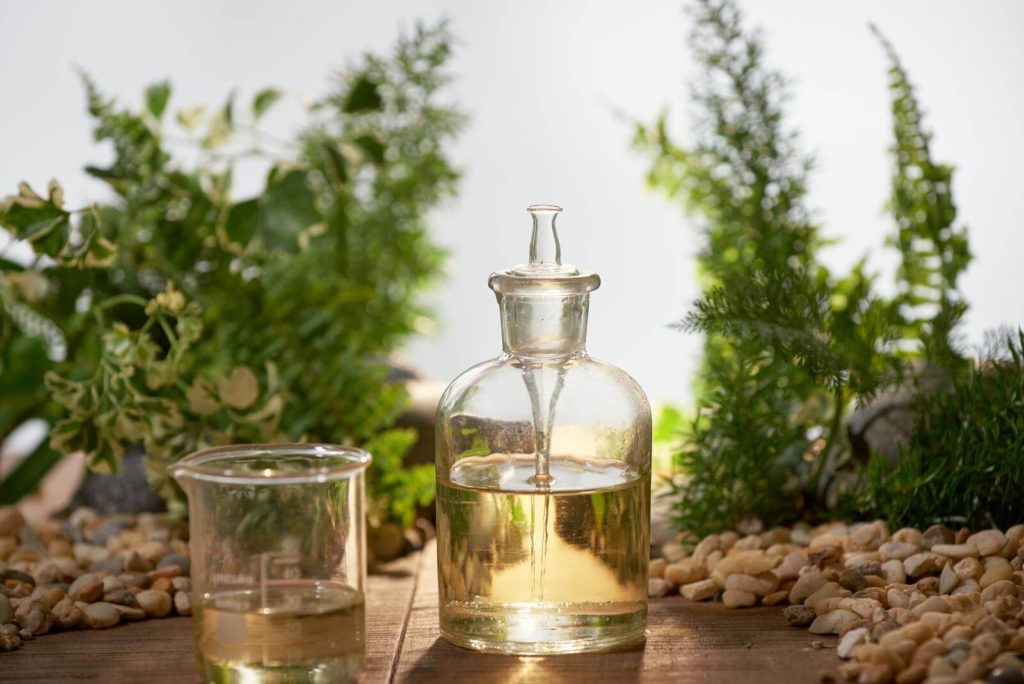
Examples of common misleading products
Lotion, an everyday product, has probably one of the most problematic labeling and marketing messages.
Let’s look at a couple real products.
A misleading highly rated argan oil lotion on Amazon
A top result of keywords search “lotion argan oil” obviously has ‘Argan Oil’ in the name of the product. This product has a very pretty packaging. It also promotes claims such as no parabens, no phthalates, vegan, cruelty free, natural, 100% recycled bottle. Given such information, one might believe this brand and product to be ‘natural’, ‘quality’ and ‘trust-worthy’.
But the first 4 predominant ingredients are:
WATER, GLYCERIN, STEARIC ACID, GLYCINE SOJA (SOYBEAN) OIL.
The first ingredient is usually water in a lotion product. That’s no surprise. The main oil content in soybean oil, and argan oil is the 17th ingredient of total of 24 ingredients on the label. This means there’s only trace amount of argan oil.
A misleading big brand Amazon’s Choice of argan oil moisturizer
Ingredients:
WATER, GLYCERIN, CETEARYL ALCOHOL, PETROLATUM, STEARIC ACID, C12-15 ALKYL BENZOATE, ALUMINUM STARCH OCTENYLSUCCINATE, DIMETHICONE, LAURETH-3, FRAGRANCE, CETEARETH-20, METHYLPARABEN, ALLANTOIN, PHENOXYETHANOL, ARGININE, SODIUM HYDROXIDE, ETHYLPARABEN, CARBOMER, ARGANIA SPINOSA KERNEL OIL, PANTHENOL, LECITHIN, PENTYLENE GLYCOL, ALCOHOL, TOCOPHEROL, ASCORBYL PALMITATE
How would you feel about paying markups or the expensive argan oil in an argan oil lotion only to find out the main effects you are getting from this product is from glycerin, soybean oil or mineral oil?
How would you feel about buying an argan oil moisturizer when there are more parabens (artificial preservatives) in the bottle than argan oil?
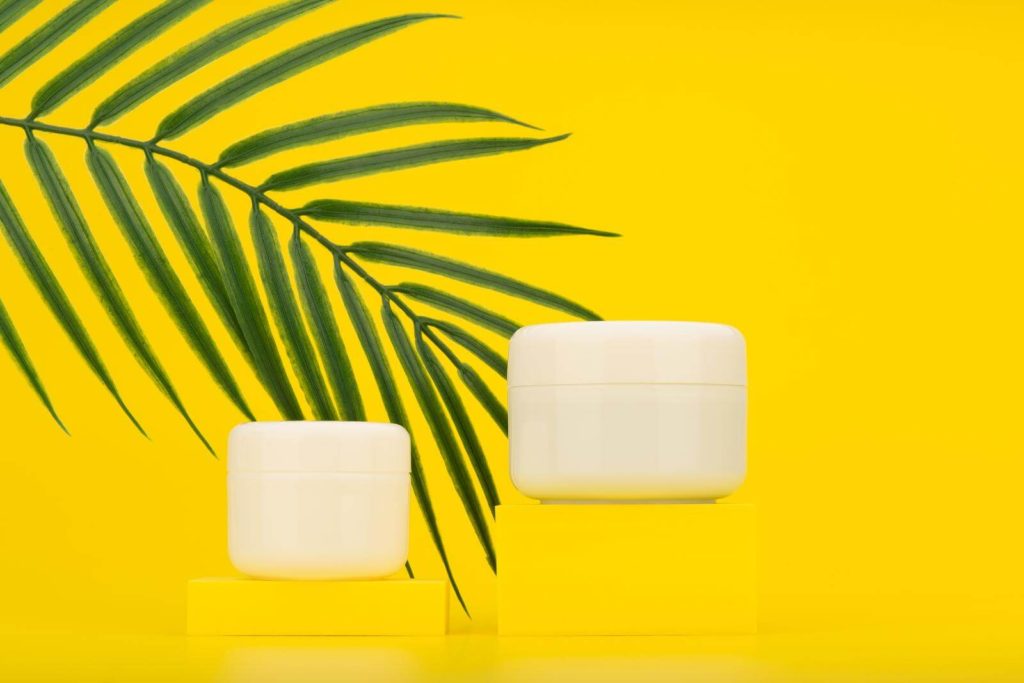
Look into the products you use
If you want to check the ingredients for yourself, here are the steps you can take.
- Find a product you have been using, interested in using, or a top result in a popular search
- Identify the promoted key ingredient, or ingredient of interest. Identify the position of the key ingredient in the ingredient list on the Label. See how many other ingredients make up higher percentages in the product before the key ingredient and how many have lower percentages after. What are the other more predominant ingredients?
- Count the total number of ingredients. Divide 100 by the total number. If the key ingredient is not one of the first few, then it is most likely less than half of that number. For example, if there are 30 ingredients, the key ingredient is likely less than 1.7% in the product if it’s not one of the first few. Most cosmetic products on the market have more than 20 ingredients.
Pro tip: Look for the image of the ingredient list on the actual printed label if you shop online. Some E-commerce sites don’t always correctly display the ingredients.Not all businesses are compliant
The information in the labels of medicines, medical devices, food and cosmetics are regulated, but that doesn’t mean all businesses are compliant. Besides incorrect labels of ingredients, there are more dangerous way to mislead consumers. Applying common sense and critical thinking when reviewing is an option.
The regulated label is on the back. Manufacturers are smart to promote visuals, taglines, key features and details the manufactures want to show you. Such information is not necessarily regulated.
In the pharmaceutical industry, promotional information is heavily regulated because the risks and the stakes are higher. But if you have watched the show Dopesick, you will know some manufactures can be very creative in trying to go around the regulations. The food and cosmetics industries are way less regulated because the risks are perceived to be lower. And the sheer amount of products does not make it manageable. Imagine what goes on in the the food and cosmetic industries.
But think again. Are the risks and stakes in the food and cosmetic industries really lower? The accumulative effects from everyday use are not negligible.
The bottom line is, you are your own last line of defense.
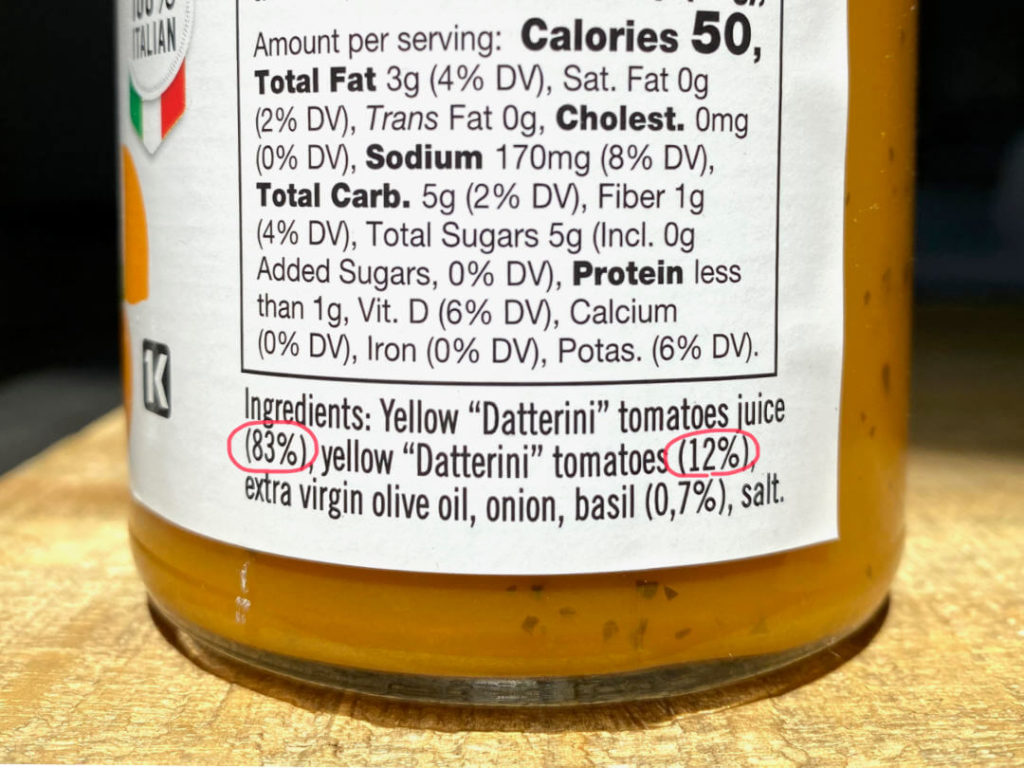
FDA does not require nor recommend quantifying the key ingredient in labeling of food, while many other top First World countries’ agencies do.
Besides requiring ingredients listed in descending order of predominance or ingoing weight in labeling, many First World countries have further requirements for the promoted key ingredient in food.
Food Standards Australia New Zealand (FSANZ) on Percentage labelling:
“Most packaged foods have to carry labels which show the percentage of the key or characterising ingredients or components in the food. This allows you to compare similar products.
The characterising ingredient for strawberry yoghurt would be strawberries and the label would say, for example, 9% strawberries. An example of a characterising component could be the cocoa solids in chocolate. Some foods, such as white bread or cheese, may have no characterising ingredients or characterising components.”
European Union on quantity of food ingredients:
“You must mention the quantity (by percentage) of any ingredients that:
appear in the name of the product (example: ‘apple pie’)
are emphasised on the labelling in words, pictures or graphics (example: ‘with walnuts’)
are essential to characterise the food and to distinguish it from other foods”
Doesn’t this piece of information protect and benefit consumers? Will FDA catch up on such regulation?
Cosmetics regulations are less
The risks of the cosmetics are believed to be lower than food. There are usually multiple key ingredients. So, the US, EU, Canada, Australia, and New Zealand all have more relaxed regulations for cosmetic products than food.
The labeling rule of listing ingredients is basically: in decreasing order of predominance, weight, volume or mass except for ingredients below 1%. The mandatory information standard does not require the listing of the quantity or percentage of each ingredient.
EU Cosmetic Products Regulation (EC) No 1223/2009 Article 19:
“The list of ingredients shall be established in descending order of weight of the ingredients at the time they are added to the cosmetic product. Ingredients in concentrations of less than 1 % may be listed in any order after those in concentrations of more than 1 %.”
Australian cosmetics standards and New Zealand cosmetics standards include similar rules.
What’s better for both manufacturers and consumers?
Obviously, recipes or formulas are proprietary information. Apart from that, wouldn’t the percentage of key characterizing ingredient in food and cosmetics one of the most valuable information to consumers? Wouldn’t it help consumers find better products? Wouldn’t the availability of such information in the label from manufactures build trust with customers regardless of the regulations? Wouldn’t such trust-worthy brand image drive sales as well?
